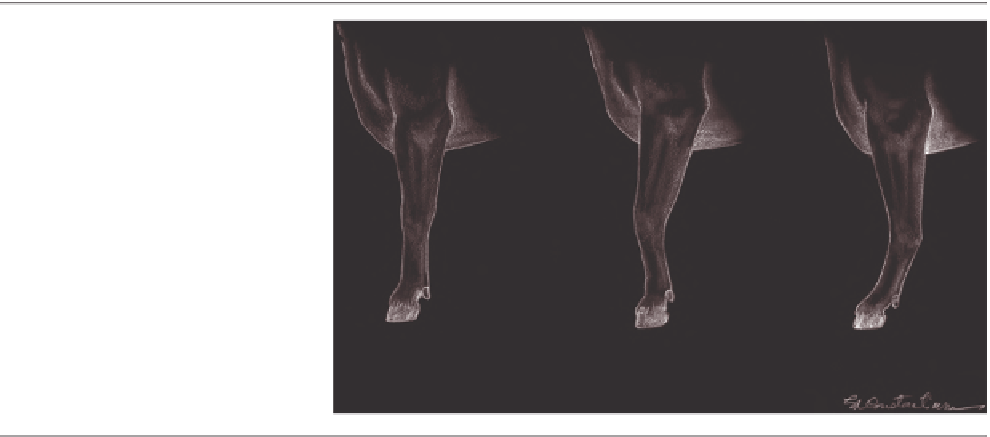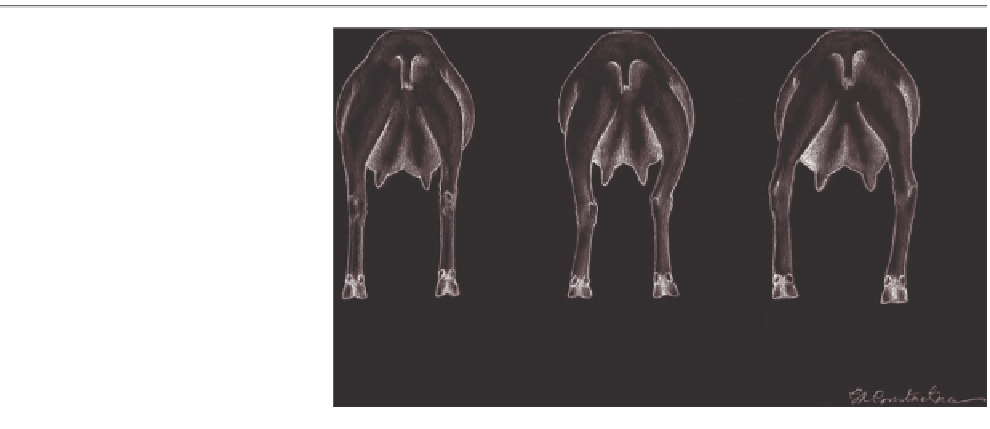Agriculture Reference
In-Depth Information
Ideal
Buck-kneed
Calf-kneed
Figure 5.6
Side-view front leg
evaluation.
Ideal
Cow-hocked
Bowlegged
Figure 5.7
Rear-view leg
evaluation.
stress on the skeleton because the shock-absorbing ability
of the forelimbs is reduced. Steep pasterns refer to the
slope of the pastern. Too steep of an angle places stress
on the skeleton because the shock-absorbing ability of
the foot is reduced. Both of these conditions can reduce
the animal 's ability to travel. “ Calf - kneed ” or “ back at the
knees ” is a less serious defect.
go straight down to the ground. The most common struc-
tural problem viewed from the rear is the condition known
as “cow-hocked,” also known as narrow or close at the
hocks. Larger or longer outside toes magnify this condi-
tion. “Cow-hocked” is fairly common and seldom is a
hindrance to the form and functionality of an animal.
“Bowlegged,” or wide at the hocks, occurs less frequently
and is magnifi ed by larger or longer inside toes. This con-
dition is more serious and is frequently associated with
animals that are base-narrow and/or have swollen or puffy
hocks. Base-narrow refers to animals that lack natural
Rear - View Evaluation
In viewing an animal from the rear (Figure 5.7), the “ideal”
legs should come out of the center of the hindquarters and







